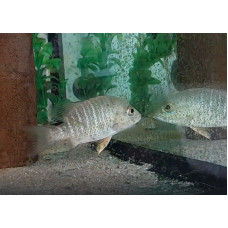Latin name
Lutjanus argentimaculatus
Other name
Mangrove jack, grey snapper, creek red bream, Stuart evader, dog bream, purple sea perch, red bream, red perch, red reef bream, river roman, or rock barramundi.
Identification
The body of the Mangrove Red Snapper is spindle-shaped, moderately large. The snout is slightly pointed. Preoperculum relatively broad, usually wider than the diameter of the eye. The preopercular notch and convexity are well developed. The teeth on the premaxilla are crescent-shaped, with no median protuberance. Tongue with teeth. The first gill arch has 16-20 gill stamens, of which 9-12 on the lower part (including rudimentary ones). Above the lateral line, rows of scales are parallel to the lateral line or parallel under the barb of the dorsal fin, rising obliquely to the dorsal surface in the posterior part of the body.
Features of fish fins
The dorsal fin has 10 hard and 13-14 soft rays. The anal fin has 3 hard and 8 soft rays. The posterior edge of the dorsal and anal fins is rounded or truncate. Pectoral fins have 16-17 soft rays. The caudal fin is notched.
Fish colouring
The upper body and flanks of the Mangrove Red Snapper are greenish-brown to reddish, while the belly is silvery or whitish. Individuals inhabiting deeper waters are completely reddish. Juveniles have 8 whitish stripes along the sides of the body and 1-2 blue lines across the cheeks.
Distribution
Widespread in the Indo-Pacific: from the Red Sea along the coast of East Africa and east to Samoa and the Line Islands; north to the Ryukyu Islands and south to Australia. Has entered the Mediterranean through the Suez Canal, but has not reached high abundance.
Habitat
Subtropical marine and freshwater oceanodromous species. The depth range is 1-120 m.
Size
The maximum body length of fish of this species is 120 cm, usually up to 80 cm. The body height is 2.5-3.1 times the standard body length. Maximum body weight is 14.5 kg. Life expectancy ranges from 31 to 57 years according to different authors.
Behavior
Euryhaline species. Juveniles and immature individuals inhabit estuarine mangroves, tidal inlets and estuaries. Adults move further offshore and form small aggregations near coral and rocky reefs at depths of up to 100 metres. They migrate from the coast to deeper reef areas, sometimes penetrating to depths of more than 100 m. This species is predominantly nocturnal.
Food and feeding habits
Mangrove snappers feed mainly at night. The diet consists of fish, crustaceans, snails and cephalopods.
Reproduction
Females reach maturity at the age of 14 years with a body length of 56.4 cm; males a year earlier with a body length of 55.8 cm. In the Persian Gulf off Abu Dhabi, they spawn in open offshore waters from September to October. Spawning is batch spawning. The average fecundity for a spawning season is 4 million eggs. Eggs and larvae are planktonic. Juveniles migrate to estuaries in late summer when they are 2 cm long.
Fishing
It is a valuable commercial fish, although total world catches are small. It is caught using bottom trawls, gillnets, hand lines and bottom longlines. Malaysia and Pakistan are the major catches. It is sold mainly in fresh and dried salted form.
Relationship with a person
Reports of ciguatera poisoning.
| Classification | |
| Phylum | Chordata |
| Class | Actinopterygii |
| Squad | Acanthuriformes |
| Family | Lutjanidae |
| Genus | Lutjanus |
| Species | L. argentimaculatus |
| Features | |
| Conservation status | Least Concern |
| Habitat | Pelagic |
| Life span, years | 57 |
| Maximum body weight, kg | 14,5 |
| Maximum length, cm | 120 |
| Sailing speed, m/s | No information |
| Threat to people | Edible |
| Way of eating | Planktonophage |
Mangrove red snapper
Tags: mangrove red snapper

